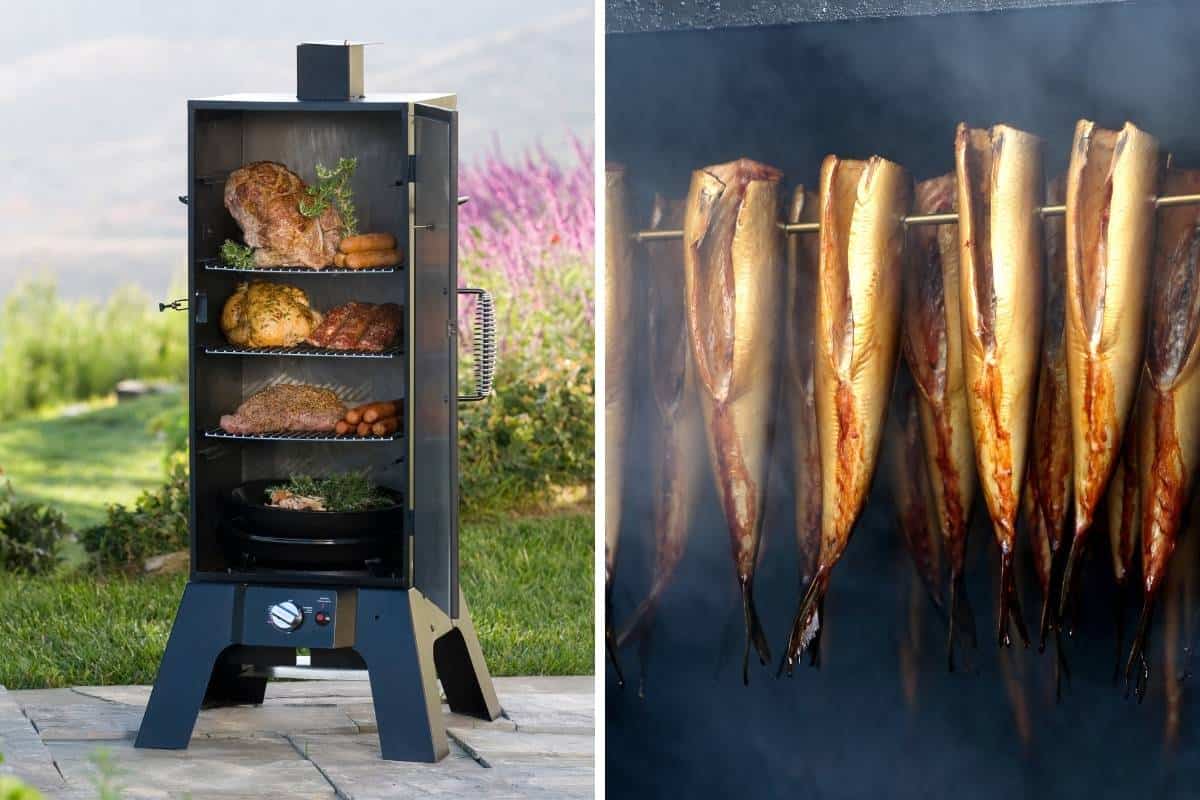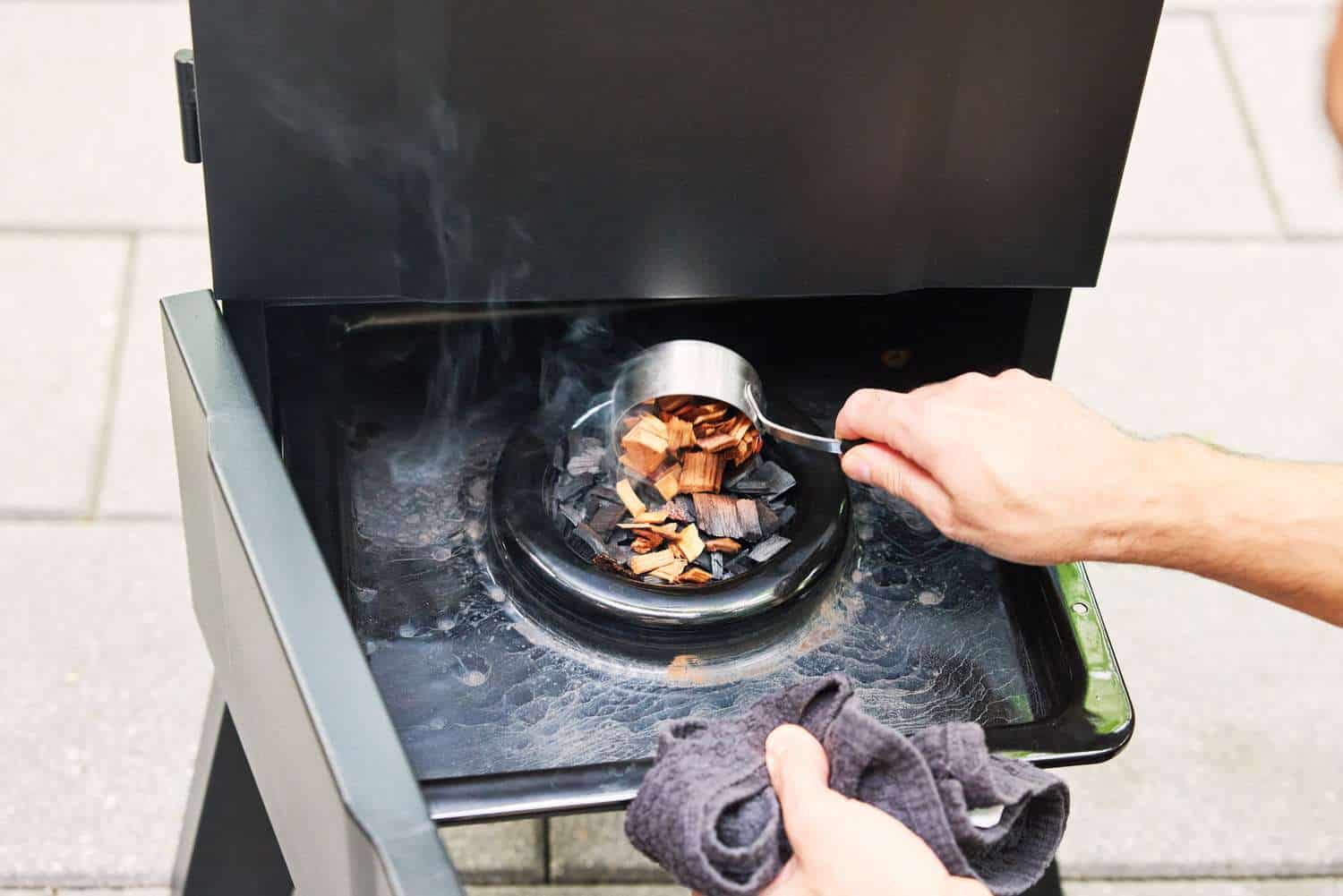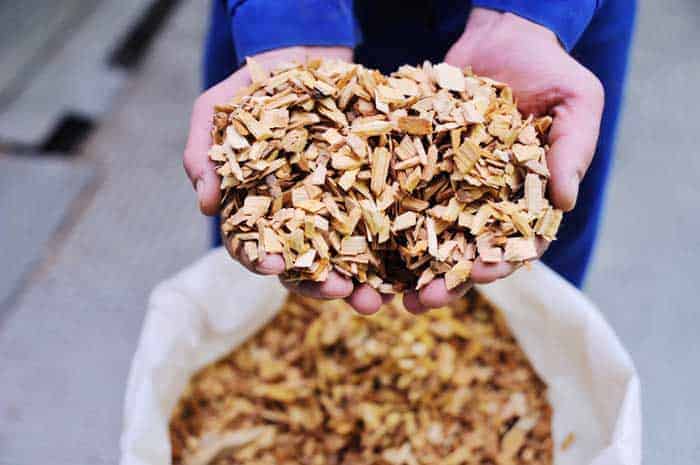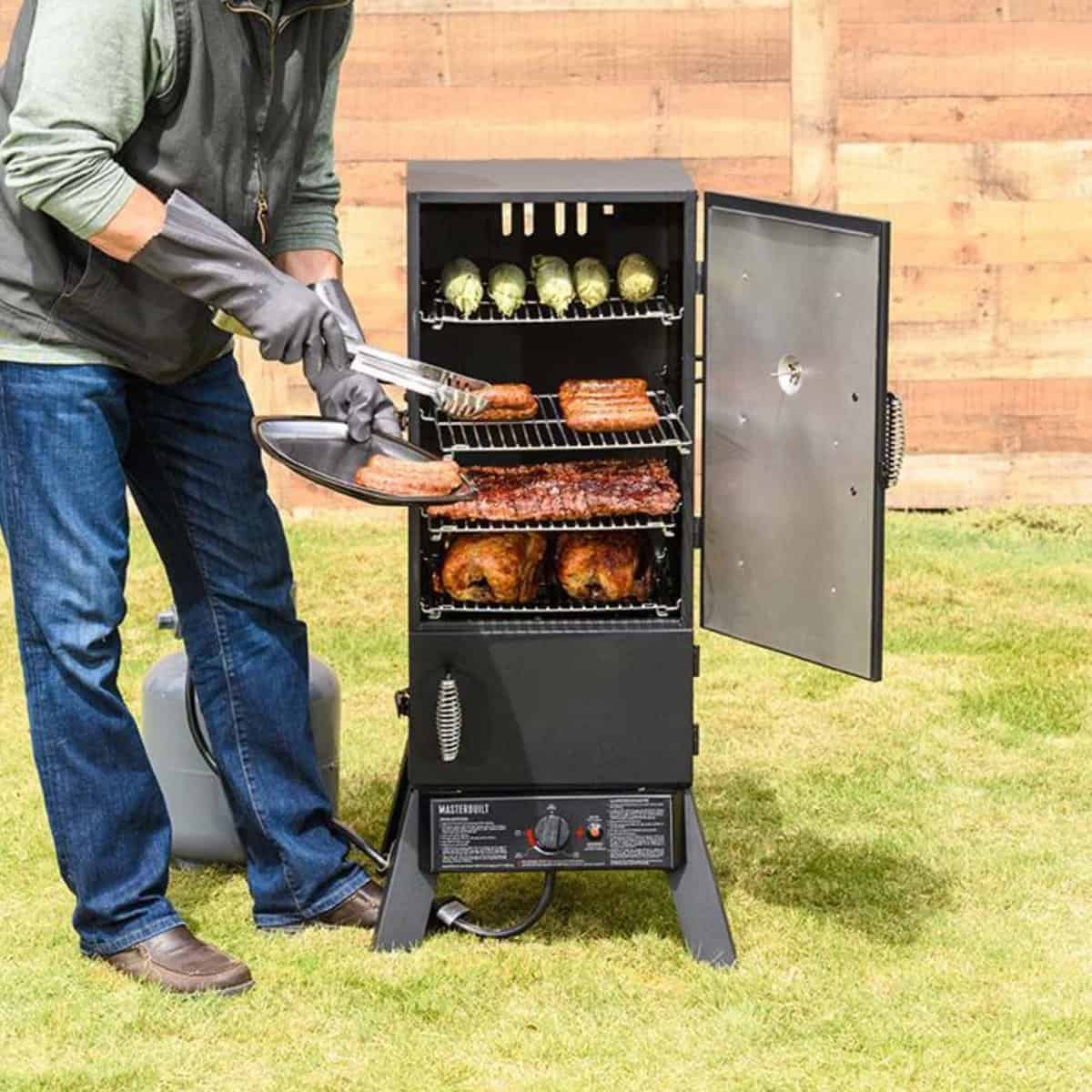To use a propane smoker, preheat it to your desired temperature, place your food and wood chips inside, monitor the temperature and smoke levels, and adjust the propane flow as needed to maintain consistent heat and smoke throughout the cooking process.
Master the Art of Smoking: A Beginner’s Guide to Using a Propane Smoker
Propane smokers are outdoor cooking appliances that use propane gas as a fuel source to generate heat and smoke for smoking meat, fish, and other foods. They are designed to provide a convenient and efficient way to smoke food, allowing you to achieve that delicious smoky flavor without the need for traditional charcoal or wood-burning smokers.
Propane smokers work by heating a burner located at the bottom of the smoker. The burner is connected to a propane tank, which supplies the fuel. As the burner heats up, it creates a consistent source of heat that is used to cook the food. The heat is then distributed throughout the smoker by a series of vents and dampers, ensuring that the food is cooked evenly.
One of the main advantages of using propane smokers is their convenience. Unlike traditional smokers that require constant monitoring and tending to maintain the temperature, propane smokers have built-in temperature controls that allow you to easily adjust and maintain the desired temperature. This makes them ideal for beginners or those who prefer a more hands-off approach to smoking.
Choosing the Right Propane Smoker: Factors to Consider
When choosing a propane smoker, there are several factors to consider to ensure that you select the right one for your needs.
Size and capacity: Consider how much food you plan on smoking at once. Smokers come in various sizes, so choose one that can accommodate your needs.
Material and construction: Look for smokers made from durable materials such as stainless steel or heavy-duty steel. These materials will ensure that your smoker lasts for years to come.
Temperature range and control: Check the temperature range of the smoker and make sure it can reach the desired temperatures for smoking. Also, look for models with precise temperature controls for easy adjustments.
Additional features and accessories: Consider any additional features or accessories that may enhance your smoking experience. This could include things like built-in thermometers, side shelves, or hooks for hanging meat.
Budget considerations: Set a budget for your propane smoker and stick to it. There are smokers available at various price points, so you should be able to find one that fits within your budget.
Preparing Your Propane Smoker: Assembly and Safety Tips
Before using your propane smoker, it is important to properly assemble it and take necessary safety precautions.
Unpacking and assembling your propane smoker: Carefully unpack your smoker and follow the manufacturer’s instructions for assembly. Make sure all parts are securely attached and in proper working order before using.
Safety precautions and guidelines: Familiarize yourself with the safety guidelines provided by the manufacturer. This may include things like keeping the smoker a safe distance from flammable materials, ensuring proper ventilation, and never leaving the smoker unattended while in use.
Proper storage and maintenance: When not in use, store your propane smoker in a dry and secure location. Regularly clean and maintain your smoker to ensure optimal performance and longevity.
Seasoning Your Propane Smoker: Why It’s Important and How to Do It
Seasoning your propane smoker is an important step that should not be skipped. Seasoning helps to remove any manufacturing residues or odors from the smoker and creates a protective layer that prevents rust and corrosion.
To season your propane smoker, follow these steps:
1. Clean the interior of the smoker with warm soapy water to remove any dirt or debris.
2. Rinse thoroughly and allow the smoker to dry completely.
3. Coat the interior surfaces of the smoker with a thin layer of cooking oil or spray.
4. Preheat the smoker to a temperature of around 275°F (135°C) for about 2 hours.
5. Allow the smoker to cool completely before using it for smoking food.
To maintain the seasoning of your propane smoker, avoid using harsh cleaning agents or abrasive materials that can remove the protective layer. Instead, use a soft cloth or sponge and mild dish soap to clean the interior surfaces.
Getting Started: Lighting Your Propane Smoker and Preheating
Before you can start smoking your food, you need to properly light your propane smoker and preheat it to the desired temperature.
To prepare your smoker for use, follow these steps:
1. Ensure that the propane tank is securely connected to the smoker.
2. Open the propane tank valve slowly to allow gas to flow into the smoker.
3. Turn on the burner control knob and ignite the burner using a long-reach lighter or match.
4. Close the smoker’s door and allow it to preheat for about 10-15 minutes.
During the preheating process, adjust the temperature control knob to reach the desired temperature for smoking. It is important to monitor the temperature closely using a built-in thermometer or an external thermometer placed inside the smoker.
Adding Flavor: Choosing Wood Chips and Other Smoking Materials
One of the key factors in achieving that delicious smoky flavor is choosing the right wood chips and other smoking materials.
There are several types of wood chips available, each with its own unique flavor profile. Some popular options include hickory, mesquite, apple, cherry, and oak. Experiment with different wood chips to find your preferred flavor combination.
In addition to wood chips, you can also consider using other smoking materials such as wood chunks, pellets, or even herbs and spices. These can add additional layers of flavor to your smoked food.
When using wood chips or other smoking materials, it is important to soak them in water for at least 30 minutes before adding them to the smoker. This helps to prevent them from burning too quickly and creates a steady source of smoke.
Preparing Your Meat: Brining, Rubs, and Marinades
To enhance the flavor and tenderness of your smoked meat, it is important to properly prepare it before smoking. This can be done through brining, using rubs, or marinating.
Brining involves soaking the meat in a solution of salt, sugar, and water. This helps to add moisture and flavor to the meat, resulting in a juicier end product. The meat should be brined for several hours or overnight before smoking.
Rubs are a mixture of herbs, spices, and other seasonings that are applied to the surface of the meat. They help to add flavor and create a flavorful crust on the outside of the meat. Rubs can be applied just before smoking or several hours in advance to allow the flavors to penetrate the meat.
Marinades are a mixture of liquids such as oil, vinegar, citrus juice, and spices that are used to flavor and tenderize the meat. The meat should be marinated for several hours or overnight before smoking.
Experiment with different brines, rubs, and marinades to find your preferred flavor combinations.
Smoking Techniques: Low and Slow vs. Hot and Fast
When it comes to smoking meat, there are two main techniques: low and slow and hot and fast.
Low and slow smoking involves cooking the meat at a low temperature (usually between 225°F – 250°F) for an extended period of time. This technique is ideal for tougher cuts of meat that require longer cooking times to become tender. Low and slow smoking allows the collagen in the meat to break down slowly, resulting in tender and flavorful results.
Hot and fast smoking involves cooking the meat at a higher temperature (usually between 300°F – 350°F) for a shorter period of time. This technique is ideal for smaller cuts of meat or when you want to achieve a crispy exterior on the meat. Hot and fast smoking allows you to cook the meat quickly while still infusing it with smoky flavor.
The technique you choose will depend on the type of meat you are smoking and your personal preferences. It is important to monitor the temperature closely and make adjustments as needed to ensure that the meat is cooked to the desired level of doneness.
Monitoring Your Smoke: Temperature Control and Maintenance
Monitoring the temperature of your propane smoker is crucial to achieving consistent and delicious results. Here are some tips for temperature control and maintenance:
– Use a reliable thermometer: Invest in a good quality thermometer to accurately monitor the temperature inside your smoker. This will help you make any necessary adjustments to maintain the desired temperature.
– Adjust the vents and dampers: Most propane smokers have vents and dampers that can be adjusted to control the airflow and temperature. Opening them will increase the heat, while closing them will decrease it. Experiment with different settings to find the right balance for your smoking needs.
– Avoid opening the smoker unnecessarily: Every time you open the smoker, you let out heat and smoke, which can affect the cooking process. Only open the smoker when necessary, such as when adding wood chips or checking on the progress of your food.
– Maintain a consistent heat source: Ensure that your propane tank is full and that the burner is functioning properly. If you notice any issues with the heat source, address them immediately to maintain a consistent temperature.
Finishing Your Meat: Resting, Slicing, and Serving
Once your meat has finished smoking, it is important to allow it to rest before slicing and serving. Resting allows the juices in the meat to redistribute, resulting in a more flavorful and tender end product.
To rest your meat, remove it from the smoker and place it on a cutting board or platter. Tent it loosely with aluminum foil and let it rest for about 10-15 minutes. This will ensure that the meat retains its moisture and remains juicy.
When slicing your meat, use a sharp knife and cut against the grain for maximum tenderness. Serve your smoked meat immediately or store it in an airtight container in the refrigerator for later use.
Troubleshooting Common Propane Smoker Problems and Solutions
While propane smokers are generally reliable and easy to use, there may be times when you encounter issues. Here are some common problems and their solutions:
– Uneven cooking: If you notice that your meat is cooking unevenly, it may be due to hot spots in the smoker. Try rearranging the meat or using a heat deflector to distribute the heat more evenly.
– Temperature fluctuations: If you are experiencing fluctuations in temperature, it may be due to a faulty regulator or gas flow issue. Check the propane tank and regulator for any leaks or obstructions. If the problem persists, contact a professional for assistance.
– Excessive smoke: If you notice excessive smoke coming from your smoker, it may be due to a buildup of grease or debris. Clean the smoker thoroughly and ensure that the vents and dampers are open to allow for proper airflow.
– Difficulty lighting the burner: If you are having trouble lighting the burner, check that the propane tank is properly connected and that there is gas flow. If the issue persists, check for any clogs or obstructions in the burner or contact a professional for assistance.
Conclusion:
Propane smokers offer a convenient and efficient way to smoke meat and other foods. By following these tips and guidelines, you can achieve delicious results every time. Whether you are a beginner or an experienced smoker, using a propane smoker can elevate your outdoor cooking experience and allow you to enjoy that authentic smoky flavor at home.
So why not give it a try and start smoking your own meat with a propane smoker? You won’t be disappointed!
Originally posted 2024-02-07 01:42:16.




